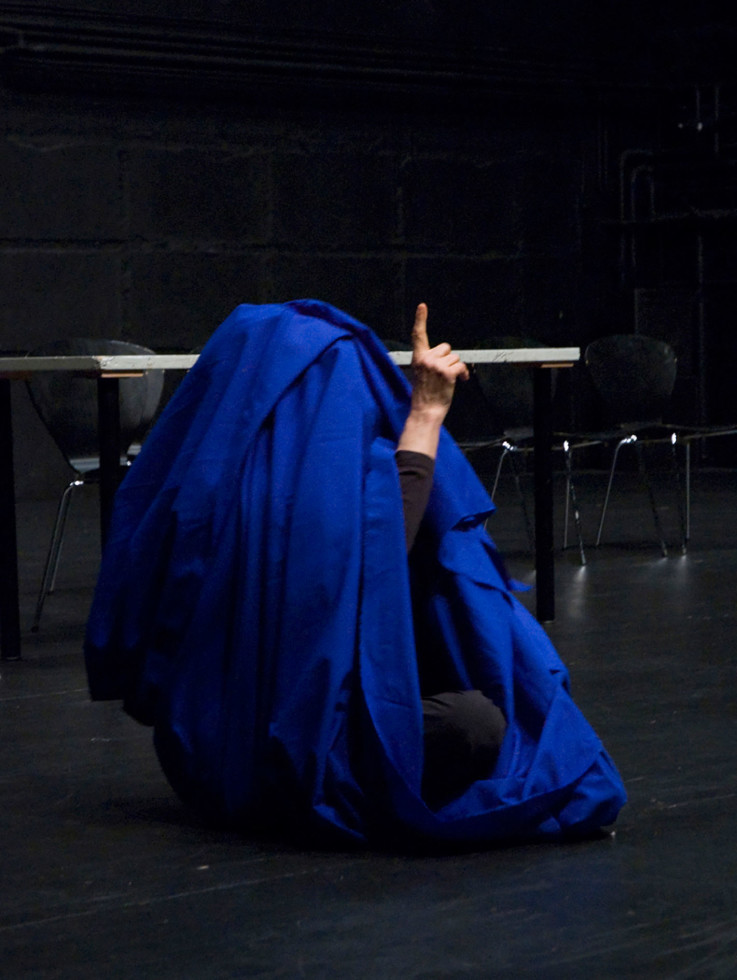
Esther Ferrer, Performance Art: Theory and Practice, SAGA Festival, Lausanne, CH, 2009. Photo: Petra Köhle/Nicolas Vermot, CH
Esther Ferrer: Performance Art
Performance and conversation
5.12 2014
Stockholm
STOCKHOLM 5 DECEMBER 2014 AT 6 PM
Esther Ferrer, born 1937 in San Sebastián (ES), lives and works in Paris. Alongside an experimental, performative practice with the internationally active artists collective ZAJ, Ferrer has, since the early 1970s, explored the relationship of the (personal) body to space and (societal) context through measuring, mirroring, scripting and assessing, as well as entering the space of prime numbers. Her multifaceted and persistent oeuvre began to gain wide attention and recognition since the late 1990s. In Spring 2014 the Musée d’Art Contemporain du Val-de-Marne, near Paris, has dedicated an extensive one-woman-show to Ferrer.
Friday December 5
6 pm: Performance Art: Theory and Practice by Esther Ferrer
Organised by the Royal Institute of Art, Stockholm, in collaboration with Moderna Museet and OEI Colour Project
At the Pontus Hulten Study Gallery, Moderna Museet
Saturday December 6
2–6 pm: Pi, 1987 –
a work by Esther Ferrer
3 pm: conversation between Esther Ferrer and Hinrich Sachs
PLEASE NOTE! At OEI Colour Project, Lövholmsgränd 12, Stockholm
With support by Stockholms stads kulturförvaltning and the Embassy of Spain, Stockholm.
Esther Ferrer’s Performance Art: Theory and Practice and Pi, 1987 – are the final manifestations in “Persistent projects, open-ended (hi)stories – practices of four unrelated artists”, a series of presentations/micro-exhibitions during spring and autumn 2014, where OEI Colour Project applies itself to the works of four European artists, all of whom emerged in the late 1960s or early 70s with certain repercussions: Rémy Zaugg, Claus Böhmler, Manfred Mohr, and Esther Ferrer. Belonging to the same generation, but emerging independently in different contexts, their practices intensively carried forward the experimental and self-reflexive strand of the visual arts that began to identify itself as contemporary; investigating the aesthetics of minimalism, conceptual art, Fluxus, text, performance and video art. On a formal level, their respective works exchanged exclusive iconography for permutation, acts of combining and ongoing inquiry. With their particular operations, these artists have pointedly expanded – and continue to expand – the range of working attitudes within the current field of visual arts.
The series “Persistent projects, open-ended (hi)stories – practices of four unrelated artists” is curated by Hinrich Sachs in collaboration with Cecilia Grönberg and Jonas (J) Magnusson.
It is supported by Stockholms stads kulturförvaltning, The Royal Institute of Art, Stockholm, and Goethe-Institute Schweden.
